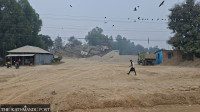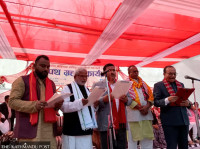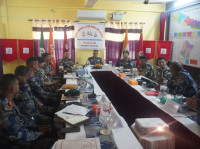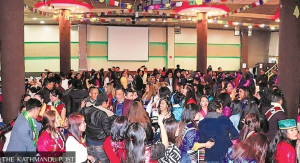Madhesh Province
Farewell to a lifelong guardian of gharials
Bed Bahadur Khadka, 61, succumbed to brain cancer on Monday.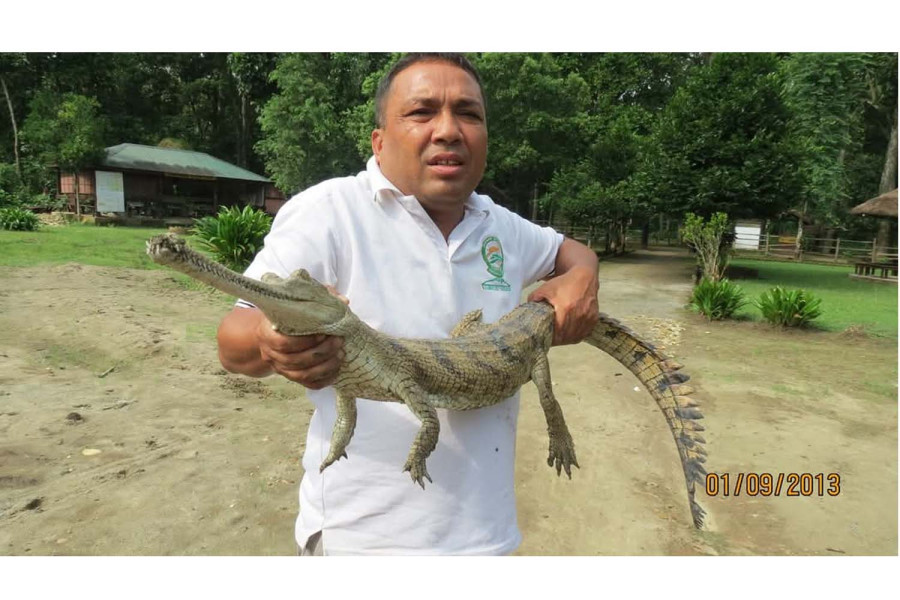
Ramesh Kumar Paudel
Bed Bahadur Khadka, a passionate conservationist who dedicated nearly two decades of his life to protecting the critically endangered gharial crocodile, passed away on Monday after a long battle with brain cancer. He was 61. He leaves behind a legacy interwoven with Nepal’s gharial conservation efforts.
Khadka worked in Chitwan National Park as an assistant conservation officer, spending most of his professional life not in an office, but along the banks of the Rapti and Narayani rivers—the habitats of the unique reptile species. He was deeply committed to the care and protection of this reptile species, known for its long, narrow snout and diet consisting solely of fish. Gharials require pristine, flowing water to survive—conditions increasingly rare in the region lately.
During his tenure, Khadka headed the Gharial Breeding Centre located in Kasara, the headquarters of Chitwan National Park. There, he became an authority on all aspects of gharial biology, behaviour and conservation challenges. He tirelessly spread awareness at the community level and represented Nepal in various international forums, sharing the country’s successes and setbacks in gharial conservation.
Even after retiring four and a half years ago, Khadka's commitment didn’t wane. He continued to support the breeding center, mentoring newcomers and emphasising the importance of dedication in conservation. “I spent so many years here working hard. I stayed a little longer after retirement so that I could share knowledge with those coming after me,” he once said.
Gharials, which share both land and water habitats, are now found in only a few South Asian countries. Nepal is home to two types of crocodiles: the mugger and the gharial. Unlike muggers, gharials are fish-eaters and depend entirely on clean rivers. In 1978, when the Gharial Breeding Center was established in Chitwan, there were approximately only 50 gharials in Nepal. The initiative was launched in response to a dramatic global decline—from around 10,000 individuals in 1940 to just 200 by the 1970s.
According to Prem Sharma, who has been working at the breeding center since 1992, Khadka served as its head for 18 years, with only a brief two-year posting in Langtang National Park.
Gharial conservation is quite challenging—survival rates in the wild are alarmingly low, requiring dedicated breeding and reintroduction programmes. The centre collects eggs laid in riverbank nests, incubates them and raises the young until they reach about 150 cm in length—typically around five years old—before releasing them into natural habitats.
Yet even after release, survival remains a struggle due to river pollution, habitat encroachment, overfishing, and reduced prey availability. Despite these odds, Chitwan’s rivers now host the largest gharial population in Nepal—265 individuals, with 152 in the Rapti and 113 in the Narayani—thanks largely to Khadka’s unwavering efforts.
“He (Khadka) was a man of knowledge and experience who took his responsibilities seriously. The numbers today reflect his deep commitment,” Kamal Jung Kunwar, former Chief Conservation Officer of Chitwan National Park, credits Khadka’s dedication.
The gharial has been enlisted as a protected species in Nepal. Conservationists say amid multiple challenges in gharial conservation, the most worrying are human activities, river pollution and depletion in number of fish. The use of fishing nets that might trap gharials is another challenge in gharial conservation in the country.
Ashish Basyal, a researcher and co-author of several scientific articles with Khadka, noted that his interest initially lay in bird conservation. However, after being stationed at the breeding centre, his focus shifted entirely to gharials. “He never gave up his love for birds, but gharials became his mission,” Basyal said. Khadka authored nearly 60 research papers in international journals, more than 20 of which focused on gharials. He also participated in international conferences in countries like India, Sri Lanka and South Africa.
In the early days of his career, Khadka painstakingly recorded data by hand, helping establish a documentation tradition that still continues. Basyal thanks both Khadka and former chief conservation officer Ramprit Yadav for building the foundation of the breeding center. “Yadav envisioned the centre, but it was Khadka who operationalised that vision with patience and relentless effort,” he added.
Khadka was known for his fieldwork ethic—camping along the riverbanks, collecting eggs, monitoring nests, and patrolling habitats for weeks at a time. He slept on riverbanks, ate meals in boats, and rushed to respond to any emergency concerning the gharials. "Even when chatting with friends, he would somehow circle back to talking about crocodiles," recalled Kunwar.
Khadka also emphasised the relationship between gharials and the environment to local communities. “If rivers aren’t polluted and pesticides aren’t used in farming, the water remains clean. Fish thrive in such water and so do gharials,” he explained. He taught that gharials, which never harm humans, are indicators of river health. “Protecting gharials means protecting the environment—and ultimately, protecting ourselves.”
In every sense, Bed Bahadur Khadka was a ghariyal gothalo—a loyal herder of gharials. His passing marks the loss of a rare soul, whose work will continue to ripple through Nepal’s rivers and conservation stories for generations to come.




 18.12°C Kathmandu
18.12°C Kathmandu1.jpg)
